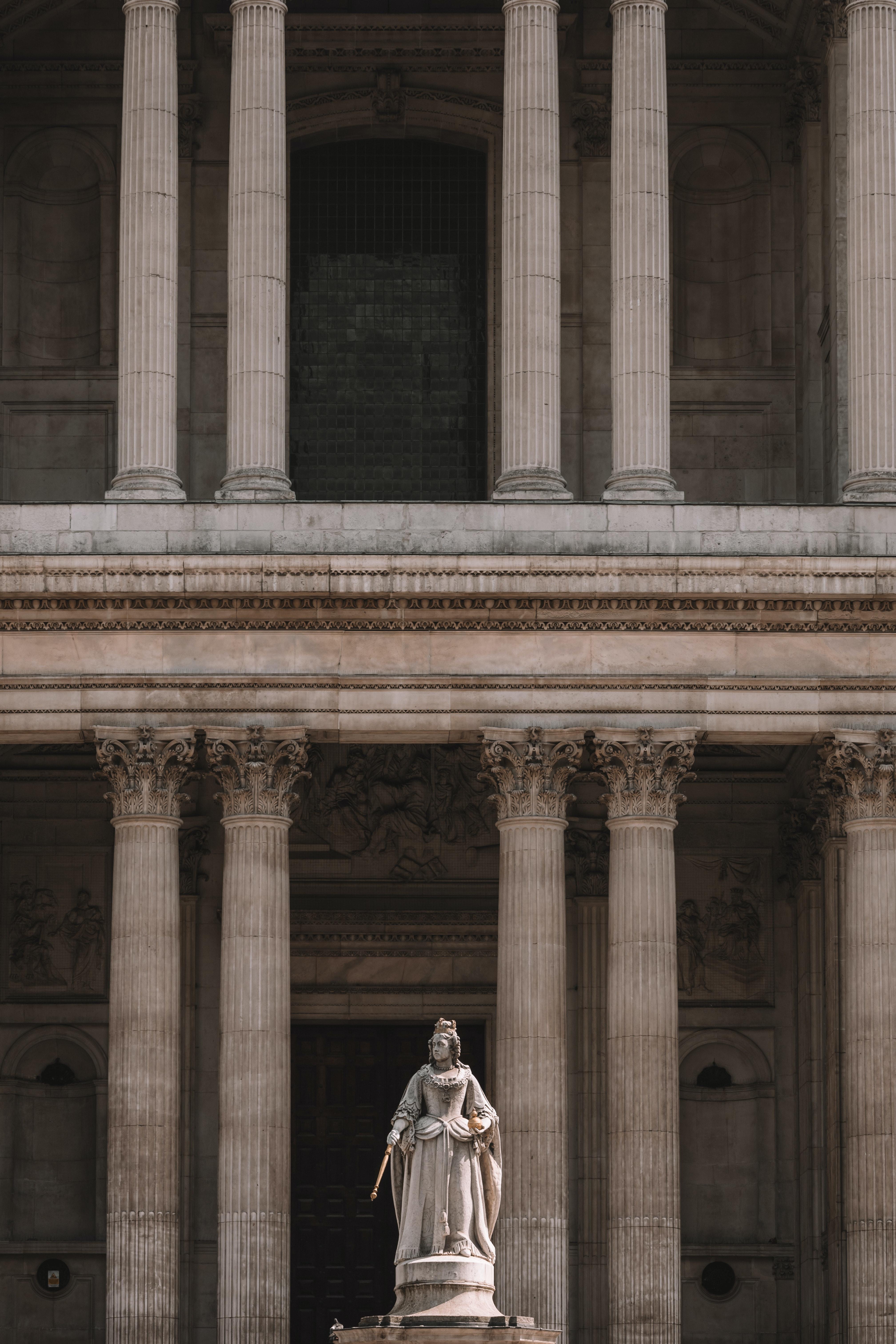History is a fascinating subject that allows us to explore and understand the past. In order to uncover the secrets of history, historians rely on various sources of information. These sources provide valuable insights into different aspects of the past, helping us piece together the events and people that shaped our world. In this blog post, we will delve into the five sources of history and explore their significance in our understanding of the past.
From written documents to artifacts, each source offers a unique perspective on historical events. We will explore the examples of written sources and discuss why they are crucial in unraveling the mysteries of the past. Additionally, we will delve into the benefits of using primary sources, which provide firsthand accounts and eyewitness testimonies. Understanding the reliability of historical data is also essential, as we will uncover the factors that can make it unreliable.
Join us on this journey through time as we unravel the five sources of history and learn how they shape our understanding of the world. Discover the importance of relying on reliable sources and how to differentiate between the trustworthy and the questionable. Let’s dive into the past and uncover the secrets that history holds for us in 2023.

What Are the Five Sources of History?
History is not just a collection of stories and events; it is a treasure trove of knowledge waiting to be explored. So, what are the five sources of history that help us uncover the mysteries of the past? Let’s dive in and find out!
1. Primary Sources: Unleashing the Time Machines
Ah, primary sources, the time machines of history! These are the original records created by people who lived through the events themselves. Think of them as the firsthand accounts that transport us back to those pivotal moments. Here, you’ll find letters, diaries, photographs, artifacts, and even oral histories.
2. Secondary Sources: The Chroniclers of the Past
Not all of us can hop into a time machine, but fear not, dear reader! Secondary sources are here to save the day. These are the writings of historians who have analyzed and interpreted primary sources. They give us the big picture, providing context, analysis, and evaluation of historical events.
3. Archaeological Sources: Unearthing the Secrets
If digging up treasures and unearthing ancient civilizations is your cup of tea, then archaeology is the key. Archaeological sources reveal the physical remains left behind by past societies. From ancient burial grounds to mysterious ruins, they offer tangible evidence that allows us to piece together the puzzle of history.
4. Oral Tradition: Where Stories Come Alive
Imagine sitting around a campfire, listening to stories passed down from generation to generation. That’s the magic of oral tradition. While not as reliable as written records, these oral accounts provide valuable insights into cultural practices, legends, and folklore. Just remember, sometimes the facts may be embellished or blurred by the passage of time.
5. Audiovisual Sources: Lights, Camera, History!
Lights, camera, action! Audiovisual sources bring history to life through the power of moving images and sound. From old newsreels and documentaries to interviews and recordings, they capture historical events in a way that words alone often can’t. So, grab your popcorn and get ready to witness history unfold on your screen.
Wrapping Up the Journey Through Time
And there you have it, dear reader – the five sources of history that allow us to embark on a captivating journey through time. Primary sources take us back to the very moments, while secondary sources help us make sense of it all. Archaeological sources uncover ancient secrets, oral tradition adds a touch of storytelling, and audiovisual sources let history unfold before our eyes.
So, the next time you seek to uncover the mysteries of the past, remember these five sources and let them be your companions on this remarkable adventure. Happy exploring!
Note: The accuracy and reliability of historical sources may vary, so it’s always prudent to cross-reference and critically analyze information from multiple sources to paint a more complete picture.

FAQ: What are the Five Sources of History?
Introduction
The field of history is like an enigmatic detective story, where historians hunt down clues to unlock the mysteries of the past. To piece together a comprehensive narrative, historians rely on various sources. These sources, like witnesses to history, provide valuable insights into the events that shape our world. In this FAQ-style guide, we will explore and demystify the five sources of history, the benefits of using primary sources, the unreliability of certain data, and how to determine the reliability of a source. So, grab your magnifying glass, and let’s dive into the historical abyss!
What are the five sources of history
Primary Sources Uncovered
Primary sources are the gold mines of historical information. These firsthand accounts, documents, and artifacts offer remarkable glimpses into the past. From ancient manuscripts to personal diaries, these sources are like time capsules preserving the stories of bygone eras. They allow historians to directly engage with the thoughts, actions, and emotions of those who experienced history in its rawest form.
What are the examples of written sources
Channeling the Ancient Scribes
The annals of history are awash with written sources that whisper tales of the past. Epic poems, chronicles, legal texts, and letters are just a few examples of the written sources that bring history to life. For instance, the Code of Hammurabi provides insight into the legal system of ancient Babylon, while Livy’s Ab Urbe Condita offers a captivating account of Rome’s foundation. These written sources are the breadcrumbs left by our ancestors, guiding us on our journey to uncover the truth.
What are the benefits of using primary sources
Time Traveling through Primary Sources
Delving into primary sources is like stepping into a time machine. These invaluable resources allow us to transcend the barriers of time and immerse ourselves in the thoughts and experiences of our predecessors. By examining their words and witnessing the events through their eyes, we gain a deeper understanding of historical context and a more authentic perspective. Primary sources place us in the shoes of history’s key actors, enabling us to decode the past more accurately.
What makes data unreliable
The Thorny Issue of Unreliable Data
Throughout history, unreliable data has been the bane of historians’ existence. Whether inadvertently inaccurate, politically manipulated, or simply falsified, data can lead historians down treacherous paths. Even the best-trained historians must tread carefully through a minefield of skewed statistics, biased testimonies, and forged documents. Unreliable data is the ultimate mischief-maker, obscuring the truth and challenging the very essence of historical inquiry.
Why Wikipedia is a bad source
The Wikipedia Wars
While the convenience of Wikipedia is tempting, historians often approach it with caution. Wikipedia’s democratic nature allows anyone to contribute, leading to varying degrees of accuracy and reliability. Like a medieval jousting match, passionate editors engage in debates, fueling the ever-evolving nature of articles. Though Wikipedia may provide a general overview, historians seek more authoritative and vetted sources that stand the test of scholarly rigor.
What are three reliable sources
The Guardians of Authenticity
In the quest for reliable sources, historians seek trusted allies to guide them through the labyrinth of historical accounts. Three reliable sources often utilized are peer-reviewed academic journals, university presses, and reputable historical textbooks. These stalwart defenders of accuracy and scholarship provide historians with the necessary ammunition to construct compelling and trustworthy narratives.
What are some examples of primary and secondary sources
Chronicles and Interpretations
Primary sources emerge from the wellspring of history, such as speeches, interviews, or archaeological artifacts. For instance, a personal diary chronicling the life of a Civil War soldier is a primary source. In contrast, secondary sources interpret and analyze primary sources to provide historical perspectives. An example of a secondary source would be a scholarly article exploring the impact of the soldier’s diaries on Civil War historiography. Both primary and secondary sources work in tandem, shedding light on the multifaceted layers of history.
How do I know if a source is reliable
Separating Fact from Fiction
Determining the reliability of a source is a crucial skill for any aspiring historian. One must scrutinize the author’s qualifications, assess bias, examine the source’s credibility, and consider corroboration from multiple sources. Cohabiting with skepticism and curiosity, historians tread this tightrope of analysis to discern the veracity of historical accounts. It’s like playing detective: questioning motives, evaluating evidence, and making informed judgments to separate historical fact from elaborate fiction.
Step into the Historian’s Shoes
With these FAQ-style insights into the five sources of history, the benefits of primary sources, the challenges of unreliable data, and the journey to find reliable sources, you are equipped to embark on your historical exploration. Just remember to embrace the joy of discovery, let your imagination roam the halls of a bygone era, and never underestimate the power of a good primary source. So, grab your magnifying glass once more and unlock the secrets of history. The past awaits your curious mind!
FAQ Subsection – End
